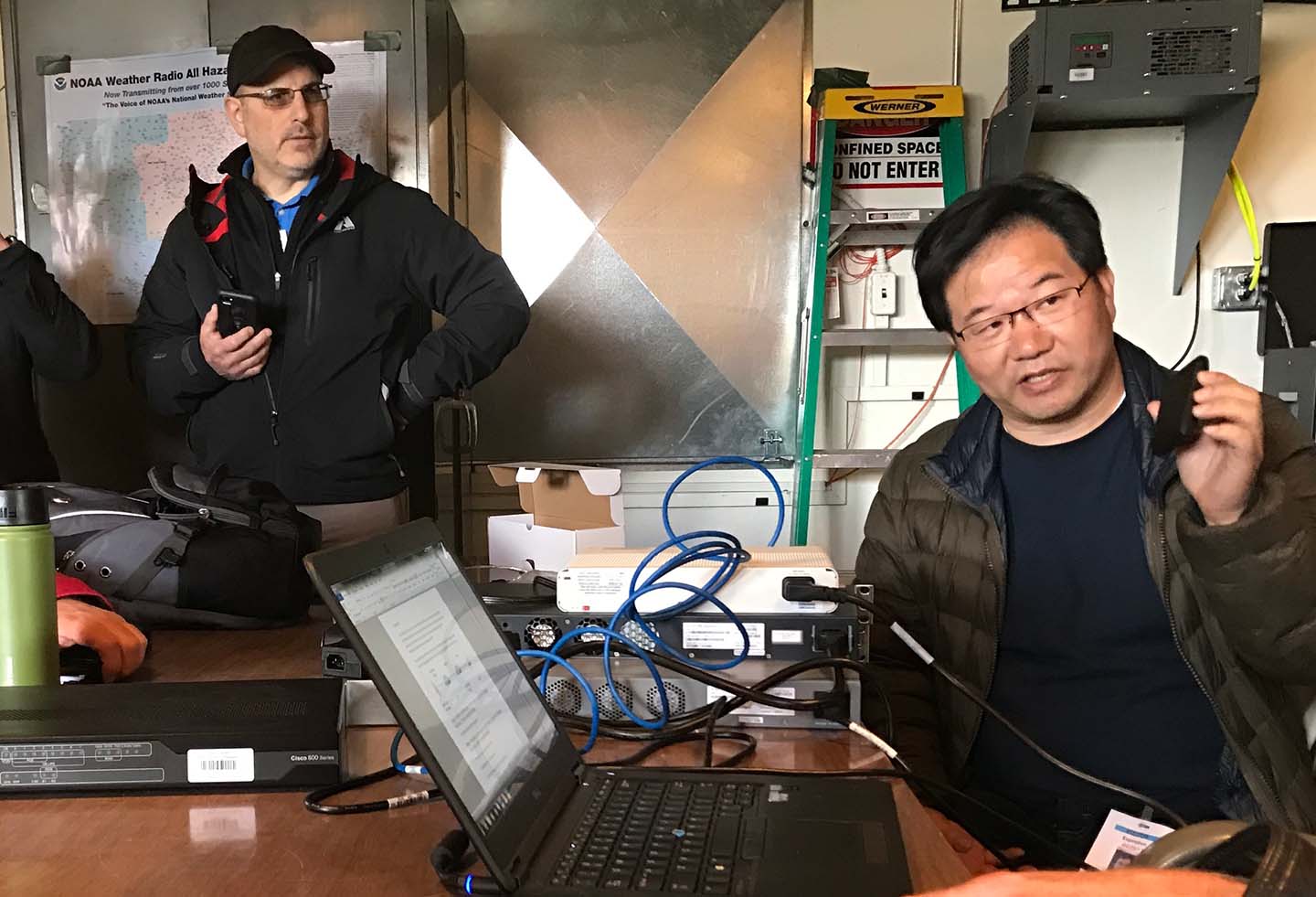Press Release
APL, DHS Science and Technology Enhance First-Responder Technologies
Poor cell phone coverage in rural areas might be frustrating to travelers, but it can be downright dangerous for first responders who have to deal with unreliable communications in an emergency.
Knowing this, the Department of Homeland Security (DHS) Science and Technology (S&T) Directorate established the First Responders Group to provide technical assistance to the response community as well as innovative solutions to the critical challenges they face during emergencies. The group uses existing and emerging technologies, research, and standards to identify and address the needs of responders at local, state, tribal and federal levels — and ultimately strengthen first-responder safety and effectiveness.
The group’s Next Generation First Responder (NGFR) program specifically focuses on projects that enable first responders to be “protected, connected and fully aware.”
Under this program, DHS asked the Johns Hopkins University Applied Physics Laboratory (APL) in Laurel, Maryland, to lead a 2017 field test in Grant County, Washington, to assess various technologies geared toward public safety operations. A key focus of the effort was to assess the integration of new technologies with the first responders’ existing infrastructure and networking systems.
And because field tests are more typically held in urban environments — where resources are often plentiful — DHS S&T wanted to try these technologies in a rural setting.
“Operational field tests with the first-responder community are extremely important,” said Ruth Vogel, project manager at APL. “They allow technologies and applications to be placed directly in the hands of the users in their operational environment.”
The test took place at the Gorge Amphitheatre, a concert venue on the Gorge campground, which can hold more than 50,000 campers over a weekend. The campground becomes the county’s largest community during events, and the site of a range of incidents — from drug overdoses to assaults — that challenge the communications and situational awareness needs of first responders.
As the trusted agent for the First Responders Group, APL provided technology verification and validation, developed the system architecture to support the integration of multiple technologies and software applications, developed the test parameters, and measured the performance of each technology assessed in the Grant County Technology Experiment (TechEx). Fifteen different DHS technologies were assessed for their capability to provide or enhance network connectivity, route or manage data, and enhance situational awareness.
“There are three things you need to consider in order to have a successful project: people, process and technology,” said APL’s John Contestabile, program manager for emergency response systems. “You have to establish a good rapport with the end users, you have to understand their objectives and processes, and you need to know how to get the technology to align with their needs.”
The entire process took nine months. The TechEx scenario, also developed by APL, provided realistic opportunities to assess the various technologies’ utility and integration with existing systems (both technical and human). The scenario also allowed first responders to identify gaps and enhancements to be addressed in future events. The evaluation team verified that the architecture implemented and configured in Grant County was easy to install and use, and provided capabilities that were valued by the first responders.
The TechEx itself was held over June 6 and 7, 2017, and based on a concert scenario at the amphitheater. Sixty members of law enforcement and fire and emergency services participated, along with five APL staff members. The test included simulated incidents meant to prompt response from law enforcement and emergency responders using NGFR technologies, including missing persons, an altercation at the campsite and a fire at the Gorge.
For Grant County responders, the most significant capabilities tested were enhanced situational awareness and location reporting, as well as the ability to transmit video from a Sheriff ’s Office unmanned aerial vehicle (UAV) to their command centers.
“I think the most amazing part about the whole experiment was the ability to sit at the command center and watch our deputies, fire departments and EMTs respond to these incidents,” said Chief Deputy Darrik Gregg. “Being able to use our UAVs in this way means that we have eyes in places we didn’t have before — all while sitting at command.”
NGFR will apply lessons from the experiment to further development of an interoperable environment — creating an architecture for responder organizations with different environments, budgets and mission requirements.
“What we learned by using this technology is how much safer and informed our responders and incident management team members will be,” said Grant County Sheriff Tom Jones. “DHS has really focused on making our sometimes-dangerous jobs much safer, especially for rural responders who many times don’t have access to such advanced resources.”
